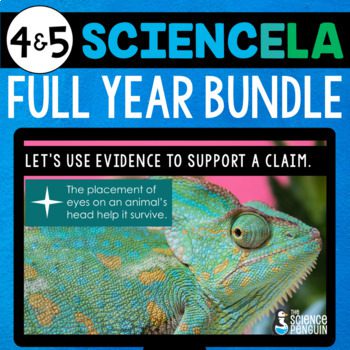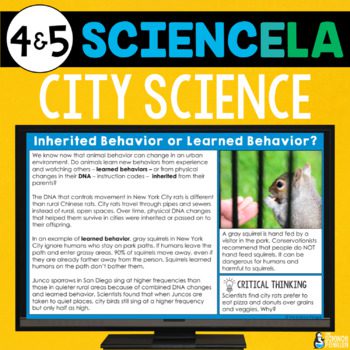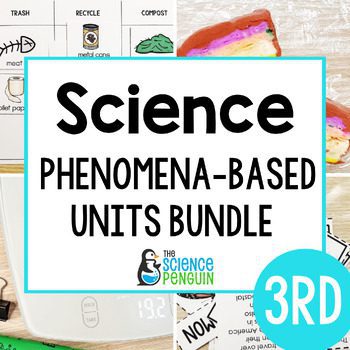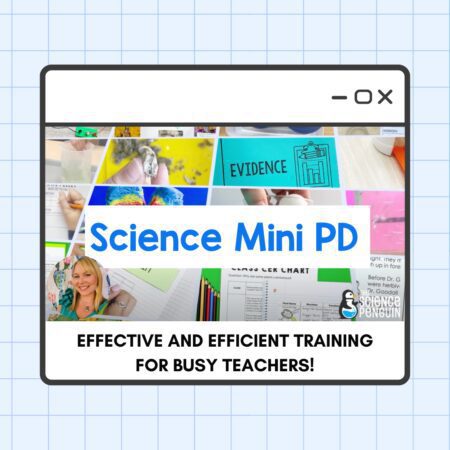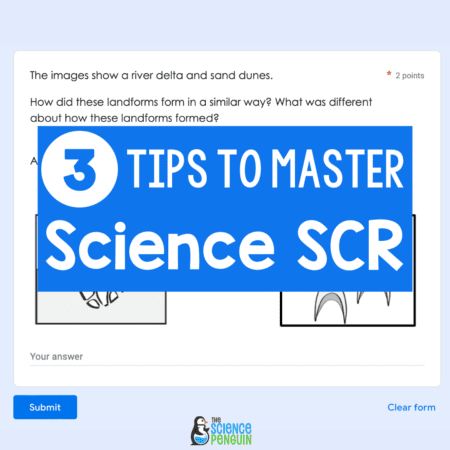
CER stands for claim, evidence, and reasoning. It is a scaffolded way for students to prove their understanding of scientific concepts in a written format. It helps to develop critical thinking and writing skills concurrently, which are both important in the classroom and the real world. You can think of it as a framework in which students can construct scientific explanations.
Claim
Claim is the first part of the CER process. A claim is a statement, usually based on scientific phenomena or an investigation. Here are a couple of examples:
- Water is a liquid.
- Animals behave in ways that increase their chances of survival.
The rest of the CER is focused on proving that claim.
Evidence
Evidence is the next step. It is the data used to support the claim. This data can come from activities done in class, experiments, text that students have read— anything that helps them to “prove” their claim!
Think of it as the time to list the reasons the claim is true. It’s helpful to be detailed in this step and specific about where the evidence comes from.
Reasoning
Reasoning is the final step. During reasoning, students give the “why” or the “how” to connect the evidence to the claim and give a scientific explanation. They justify how the evidence proves the claim and tie it all together.
When these three CER steps are complete, you have a piece of writing that exercises scientific critical thinking and writing skills while giving a well-thought-out scientific explanation!
All About CER
In this video, we’ll walk you through CER and our best tips and tricks!
Three Classroom Tips
We have a few tips for utilizing CER in the classroom to make this smooth.
1. Timing
First, consider your timing. A CER is not something that can be completed on the first day or two of a unit because it requires an understanding of the content and several pieces of exposure to a topic.
In our Phenomena-based units, we place the completion of CER near the end of a unit so that students can synthesize information from several activities as evidence.
Sometimes, we introduce the claim near the beginning of a topic and add evidence as the unit progresses. Sometimes, the whole CER is completed in one day near the end of the unit. It just depends on the topic and the flow of activities.
Either way, it’s important to ensure that students have plenty of exposure to the phenomena before completing a CER.
2. Differentiation
Another tip is to differentiate if needed. Within Science Penguin units, we usually intend for the CER to be completed together as a class. This allows for great discussion and a shared writing experience to help support understanding.
However, you can tailor this to your needs.
- Maybe you want students to write evidence or reasoning independently and share it with the class or develop evidence in pairs or groups.
- Maybe you do the whole thing as a formative assessment to see their understanding.
- You could even provide sentence stems for students who need them!
To accommodate these teaching differences, we include a blank class CER chart and a blank student unit page CER chart.
3. Development Over Time
Finally, remember that this is not an instant process. As with any writing strategy, this takes time to develop properly. Consider scaffolding the usage of CER in your classroom throughout the year.
You could start out by modeling it at the beginning of the year with heavy explanation of your thought process, then transition into writing the evidence and reasoning together, then allow groups to try, then eventually individual students could try to complete it on their own.
You’ll see progress throughout the year as your students are exposed to the process over time!
Top Teaching Tools with CER
We’ve included CER in so many of our resources. Take a look at the examples below or see all units with CER.

